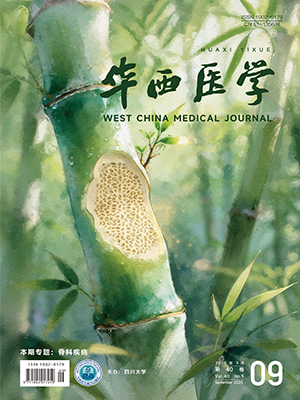| 1. |
廖麟榮, 廖曼霞. 腦卒中后肌肉特性變化研究進展. 中國康復醫學雜志, 2015, 30(3): 306-309.
|
| 2. |
何雯, 王凱. 腦卒中后上肢功能康復研究進展. 中國康復理論與實踐, 2014, 20(4): 334-339.
|
| 3. |
楊慎峭, 金榮疆, 朱天民, 等. 康復訓練結合電針對腦卒中肢體痙攣大鼠 γ-氨基丁酸能中間神經元表達的影響. 中國康復醫學雜志, 2013, 28(3): 198-203.
|
| 4. |
Lance JW. Symposium synopsis//Feldman RG, Koella WP, Young RR. Spasticity: disordered motor control. Chicago: Year Book Medical Publishers, 1980: 485-494.
|
| 5. |
G?verth J, Sandgren M, Lindberg PG, et al. Test-retest and inter-rater reliability of a method to measure wrist and finger spasticity. J Rehabil Med, 2013, 45(7): 630-636.
|
| 6. |
Mehrholz J, Wagner K, Meissner D, et al. Reliability of the modified tardieu scale and the modified ashworth scale in adult patients with severe brain injury: a comparison study. Clin Rehabil, 2005, 19(7): 751-759.
|
| 7. |
Brashear A, Zafonte R, Corcoran M, et al. Inter- and intrarater reliability of the Ashworth Scale and the Disability Assessment Scale in patients with upper-limb poststroke spasticity. Arch Phys Med Rehabil, 2002, 83(10): 1349-1354.
|
| 8. |
Fleuren JF, Voerman GE, Erren-Wolters CV, et al. Stop using the Ashworth Scale for the assessment of spasticity. J Neurol Neurosurg Psychiatry, 2010, 81(1): 46-52.
|
| 9. |
Sorinola IO, White CM, Rushton DN, et al. Electromyographic response to manual passive stretch of the hemiplegic wrist: accuracy, reliability, and correlation with clinical spasticity assessment and function. Neurorehabil Neural Repair, 2009, 23(3): 287-294.
|
| 10. |
Lindberg PG, G?verth J, Islam M, et al. Validation of a new biomechanical model to measure muscle tone in spastic muscles. Neurorehabil Neural Repair, 2011, 25(7): 617-625.
|
| 11. |
Zetterberg H, Frykberg GE, G?verth J, et al. Neural and nonneural contributions to wrist rigidity in Parkinson’s disease: an explorative study using the NeuroFlexor. Biomed Res Int, 2015, 2015: 276182.
|
| 12. |
G?verth J, Eliasson AC, Kullander K, et al. Sensitivity of the NeuroFlexor method to measure change in spasticity after treatment with botulinum toxin A in wrist and finger muscles. J Rehabil Med, 2014, 46(7): 629-634.
|
| 13. |
Kachmar O, Voloshyn T, Hordiyevych M. Changes in muscle spasticity in patients with cerebral palsy after spinal manipulation: case series. J Chiropr Med, 2016, 15(4): 299-304.
|
| 14. |
Wang R, Herman P, Ekeberg ?, et al. Neural and non-neural related properties in the spastic wrist flexors: an optimization study. Med Eng Phys, 2017, 47: 198-209.
|
| 15. |
von Walden F, Jalaleddini K, Evertsson B, et al. Forearm flexor muscles in children with cerebral palsy are weak, thin and stiff. Front Comput Neurosci, 2017, 11(11): 30.
|
| 16. |
Pennati GV, Plantin J, Borg J, et al. Normative NeuroFlexor data for detection of spasticity after stroke: a cross-sectional study. J Neuroeng Rehabil, 2016, 13: 30.
|




